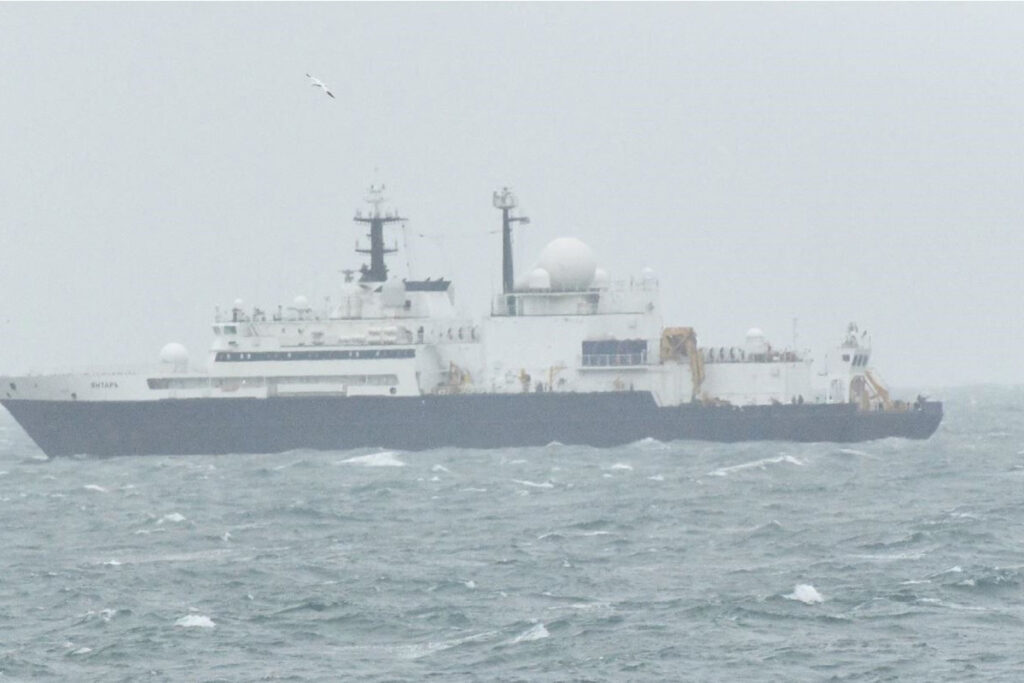The Dutch Ministry of Defence stated the Russian ship Yantar was escorted out of the North Sea earlier this week after working close to very important maritime infrastructure within the Netherlands’ unique financial zone.
In accordance with a ministry assertion on 6 November, the hydrographic survey ship HNLMS Snellius and the patrol vessel HNLMS Friesland have been deployed to watch the Yantar, which was working simply outdoors Dutch territorial waters.
The vessel left the realm on Tuesday afternoon below escort.
The Defence Intelligence and Safety Service (MIVD) has warned repeatedly that Russian “analysis” vessels such because the Yantar may very well be used to map undersea cables, pipelines and different infrastructure. The MoD stated Snellius was additionally assessing the situation of seabed methods in the identical space.
“The Russian ship Yantar was working earlier this week within the Dutch a part of the North Sea, outdoors territorial waters. After monitoring by the Dutch navy, the ship left this zone below escort on Tuesday afternoon.
The MIVD (Dutch Defence Intelligence and Safety Service) has been warning of Russian analysis vessels, together with the Yantar, for a while. This well-known Russian ship may very well be deployed to map our maritime infrastructure. Earlier this week, the ship entered the North Sea. The navy then deployed HNLMS Snellius and HNLMS Friesland. Whereas being escorted by the patrol vessel HNLMS Friesland, the Yantar left the North Sea. HNLMS Snellius is conducting analysis into the situation of the submarine infrastructure within the Yantar’s working space.”
The Yantar is operated by the Russian Navy’s Foremost Directorate of Deep-Sea Analysis (GUGI), a department accountable for subsea intelligence and particular operations. Maritime monitoring information confirmed the vessel nearly stationary on 2 November close to 53.8°N, 5.9°E, near the Atlantic Crossing-1 and IOEMA fibre cable routes. The ship has appeared in comparable areas earlier than, close to subsea information and vitality hyperlinks.
Current photographs present new radomes put in on the vessel, suggesting doable upgrades to its surveillance methods. Dutch defence sources stated that though the Yantar remained outdoors territorial waters, its proximity to undersea infrastructure warranted shut monitoring.
This follows comparable incidents elsewhere in Europe. In January, the Royal Navy tracked the Yantar by the English Channel with HMS Somerset and HMS Tyne sustaining watch.

